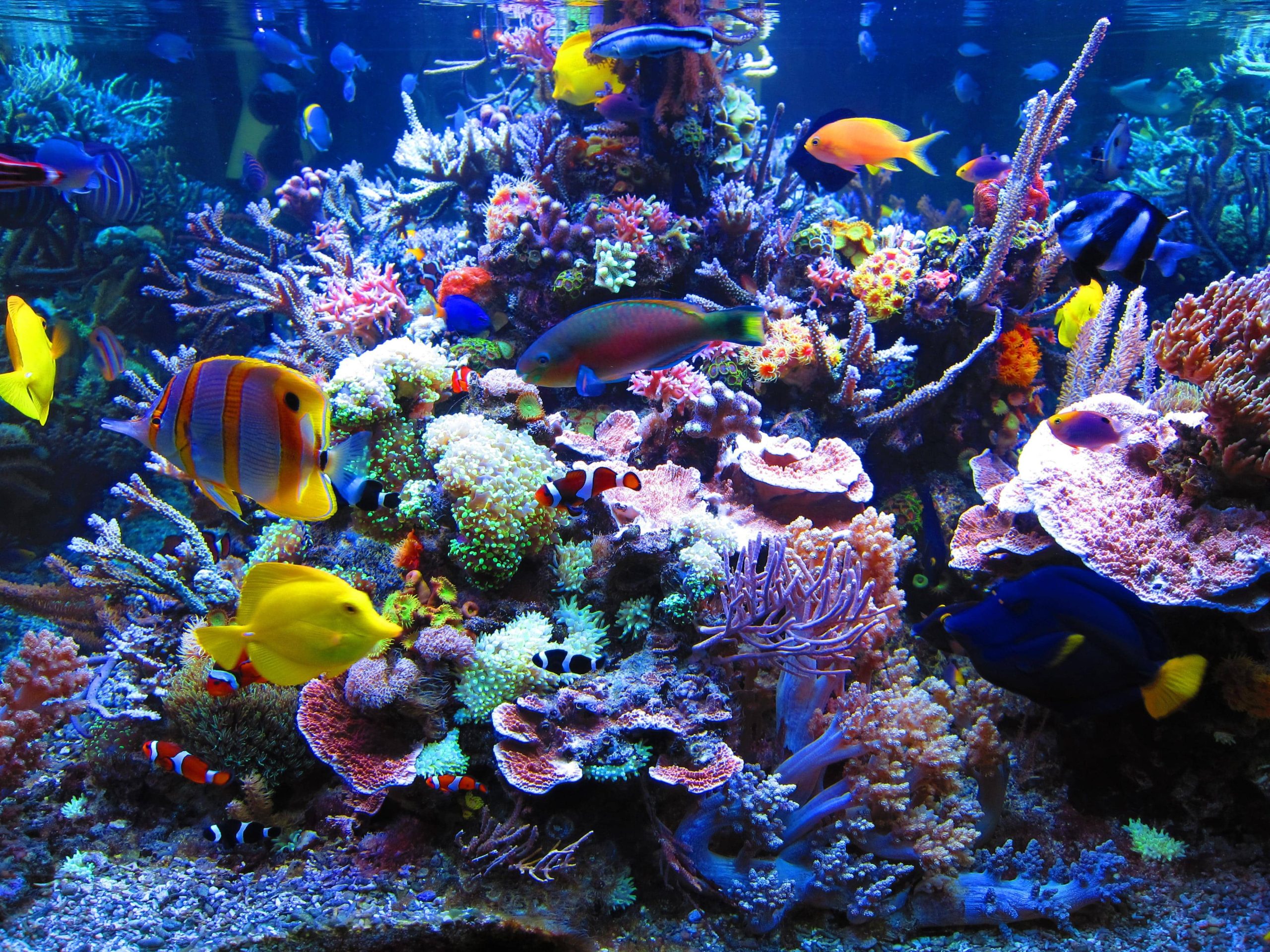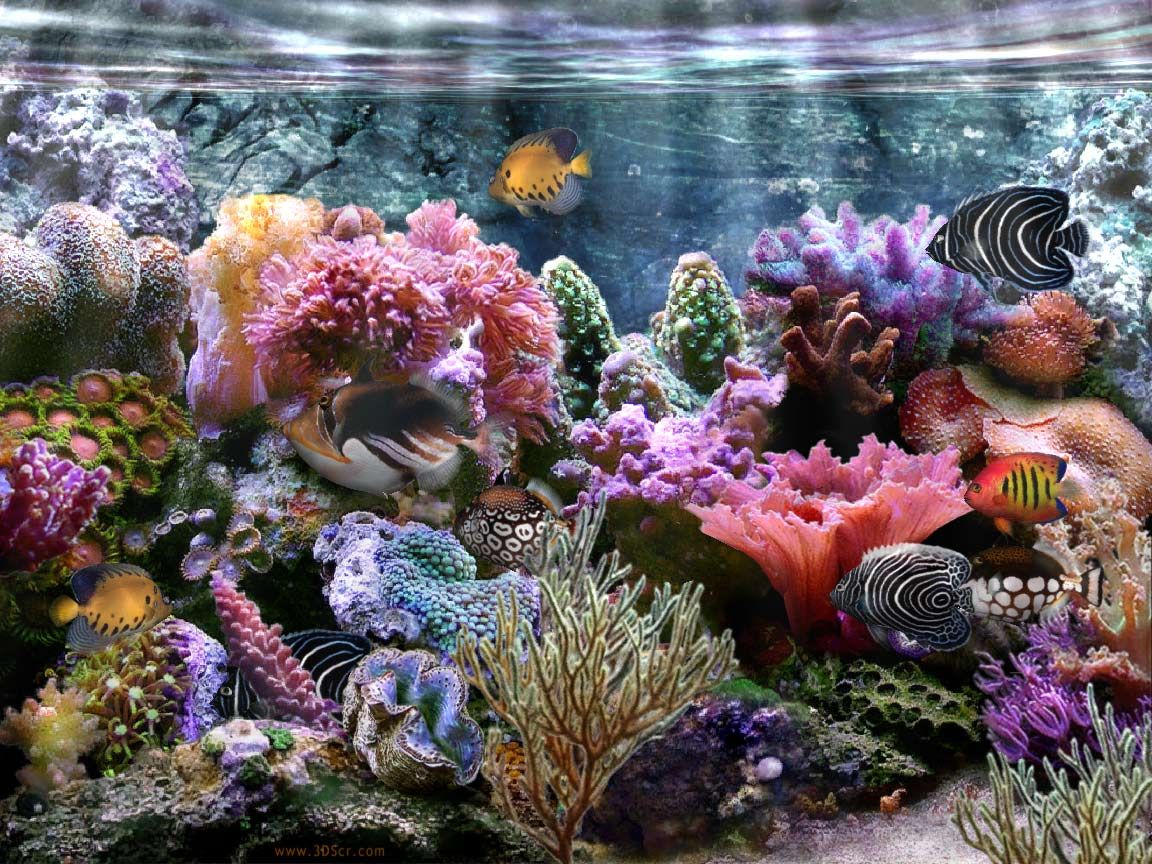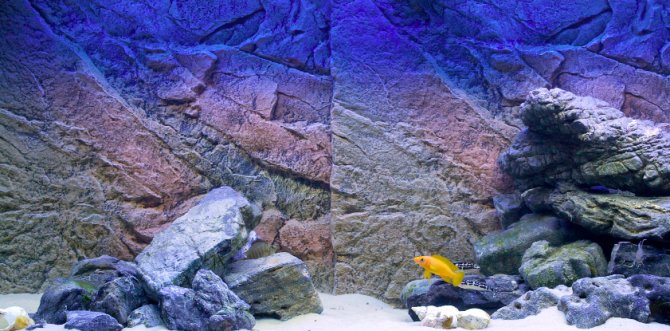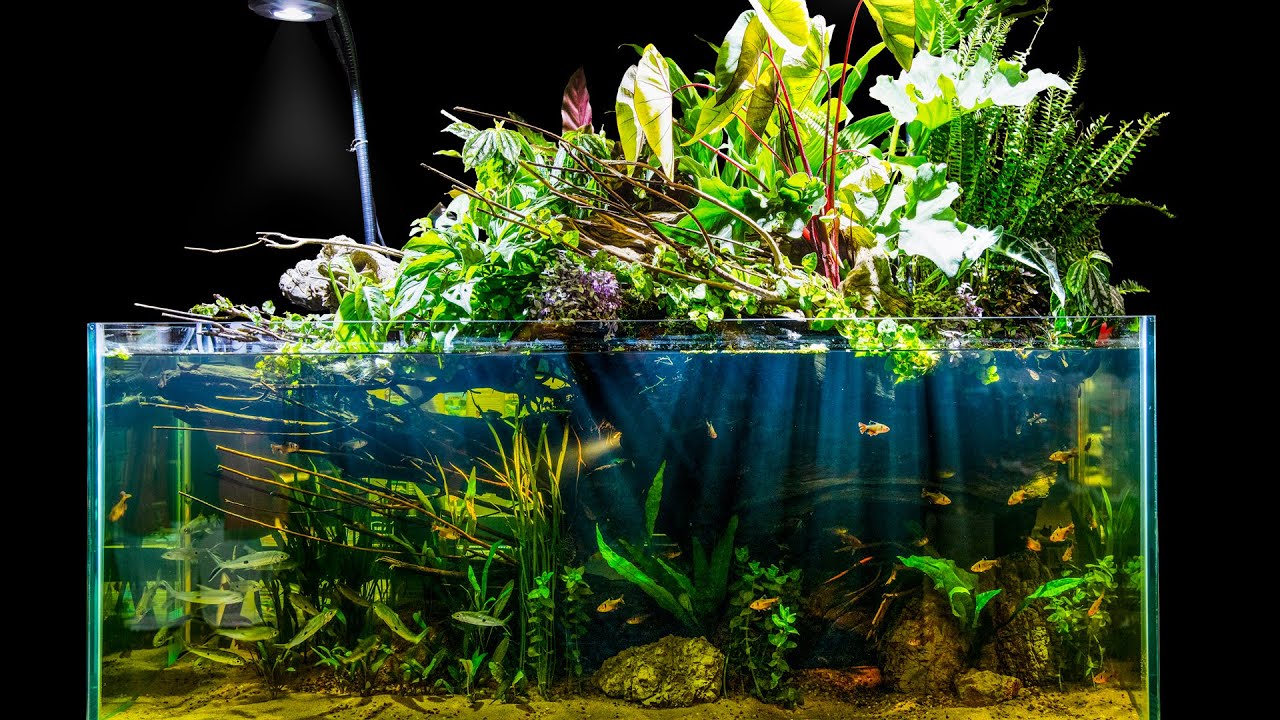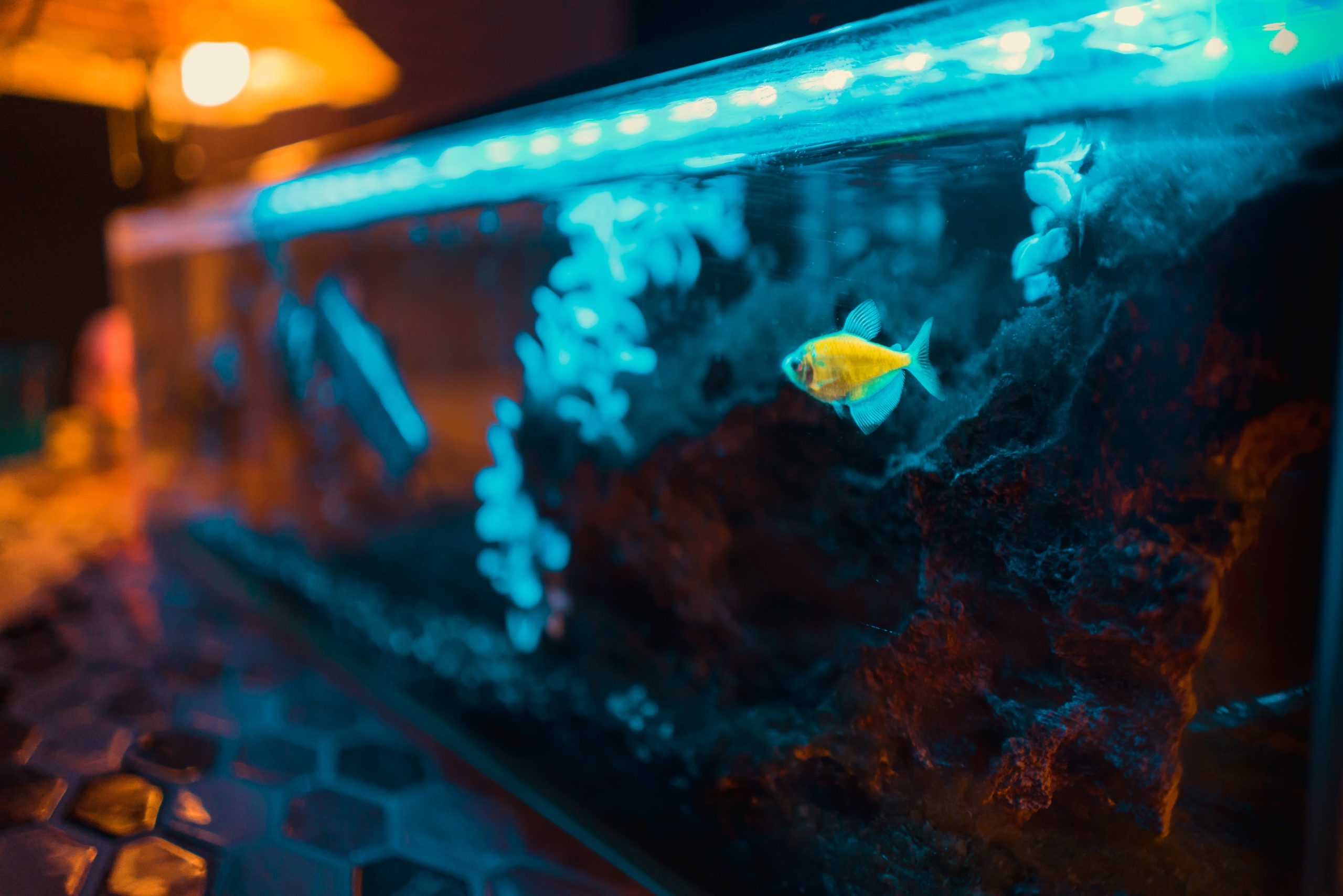Setting up a new aquarium can be a wonderful addition to your home and something that can be a great hobby for anyone who doesn’t mind getting their hands a little wet. It can involve a lot of tinkering, but this will turn an aquarium into a living piece of art. This article is meant to help people who plan to be serious about fishkeeping and want to get a jump start on their new aquarium adventure.
Knowing where to start a new aquarium project can be a little tricky. Usually, there’s some idea of what kind of fish or plants are wanted, but more direction is needed to get to the end goal.
Preparation
Where the aquarium is being placed will determine a few other steps even before the aquarium is brought home. It’s important to know what type of aquarium is desired and the size based on what is kept. Aquariums range from as small as one gallon (or even smaller) up to several hundreds of gallons. The bigger the aquarium, the stronger the stand will need to be to provide proper support. Going with an even larger aquarium, support reinforcements under the flooring may be required. This will need to be considered if the amount of water that is being kept is in the hundreds of gallons.
An aquarium should not be too small or too large. The size of the tank will determine the cost of the total aquarium set-up. All equipment is mainly based on tank size, so if the tank is larger, the expense will be greater. Keep in mind that everything you put in the tank will grow, so don’t go too small. It’s not a bad idea to go smaller at first, then as fish and plants grow, the aquarium can be upgraded.
When finding a place to set up an aquarium, other considerations are making sure it’s close to a power supply and trying to stay away from a bright window as much as possible. Lots of high bright natural sunlight will only create unwanted algae issues.
Remember that too many things plugged into one electrical outlet may cause electrical issues. This can cause real concern for the fish. Also, make sure the electrical is not likely to get wet. All cords from the tank should have drop loops to avoid water traveling down the cords right into the socket. This can cause some serious issues.
Also, consider if the room the aquarium is being placed in is climate controlled. In the winter months, a heater will be needed, which is much easier than having to cool a tank. In the summer months, temperatures still need to stay consent in a range, so some type of water cooler or air conditioner is needed. Newer homes with central air don’t really have any problems. In fact, a heater will most likely still come on. In an older home, a window AC may be needed.

Some aquarium keepers go to the lengths of having a water chiller for more done-up tanks. Frozen water bottles can also be considered for hot summer days.
When placing the aquarium, consider the overall placement of the tank. Make sure it flows with the rest of the room and somewhere house guests can see it. A lot of work goes into making an aquarium look nice, so it should be visible right when the room is entered.
Water
Where is the aquarium water coming from? Knowing what type of water that is going to be worked with is important. Is it city water or a well? Treatment of water can get more complex as the water is more and more off based on what the aquarium needs are. Having the water tested beforehand, either by a professional or using a test kit, is needed. Once you figure out the water quality, you will know what you need to treat the water.

Most aquarium keepers will be able to just add chemical water conditioners to water to make it suitable. Some water, such as from a well, might be ready right out of the ground or will only need small adjustments. Some water will require much more chemistry to make it suitable for aquarium life. In these cases, people use a Reserve Osmosis machine to correct these issues.
Getting the Aquarium Started
Substrate
Once the aquarium is set up, and in place, it’s almost time to add water to it, but first, it’s a good idea to get some intention planning and aquascaping done to the tank. Think about what substrate is going to be required for your type of tank. Generally, little pea size rock is what is going to be used to allow for a process that will continue to keep the aquarium a healthy living environment. This size of gravel is also easier to clean and doesn’t mark up the water so much when using an aquarium vacuum.

If the goal is to grow plants in the aquarium, there are substrates that can be used that have the essential minerals plant roots need. There is “aquascaping” material that is made up like a planting soil. There are also harder materials that are almost like small little rocks that are packed with minerals. This substrate is a nice option because it will last for the life of the aquarium.
 For plant roots, it’s a good idea to use sand as a root binder. The bottom layer of the aquarium can be sand, then the plant substrate, then the pea size gravel on top. Sand can also just be focused around the areas there are plants, then the plant and pea size gravel throughout the rest of the aquarium. If there is a concern that the plants will be ripped up by certain fish in the tank, little strainers or mini pots can be used for the roots, then these are buried in the substrate or just placed on top. This will really secure the plant, and it will take a lot for the plant to be pulled up.
For plant roots, it’s a good idea to use sand as a root binder. The bottom layer of the aquarium can be sand, then the plant substrate, then the pea size gravel on top. Sand can also just be focused around the areas there are plants, then the plant and pea size gravel throughout the rest of the aquarium. If there is a concern that the plants will be ripped up by certain fish in the tank, little strainers or mini pots can be used for the roots, then these are buried in the substrate or just placed on top. This will really secure the plant, and it will take a lot for the plant to be pulled up.
Decor

Additional decorations can be another way to add some beauty to the tank. There are many options, and this just comes down to preference. One recommendation is to take a look at Malaysian driftwood. This wood looks nice in a planted tank and comes in real unique shapes. This wood also has certain properties that aid in water chemistry, making the water quality even more suitable for fish. Not to mention, the wood creates lots of good hiding places for the fish and something many fish would like to chew on.
Filtration
Filtration is one of the most important aspects when it comes to an established, long-lasting aquarium. This is one thing that sets many aquarium keepers apart.
It’s recommended to have at least two forms of filtration. Part of the reason for this is that, over time, filters collect good bacteria to help eliminate harmful waste in the tank. During an aquarium cleaning, it’s recommended to clean one filter at a time so that there is always a good bacteria source in the tank. Another reason is just in case one filter fails, the second filter will still somewhat support the aquarium from crashing. This bacterial concept is known as the Nitrogen Cycle.
There are filtration types that eliminate Ammonia and Nitrites from the water, then a filtration that eliminates Nitrates. These three elements are all part of the Nitrogen Cycle. This is where bio-load (fish food and waste) builds up over time and creates Ammonia, which is toxic to fish at a certain level. If there is water with no filtration, Ammonia will build over time. With filtration, a good bacteria will transform Ammonia into a less toxic form, Nitrites, which will be transformed into an even less toxic form of Nitrates. A second form of filtration will then element Nitrates.
The most common form of filtration is a Hang on the Back (HOB) filter. This is even what comes standard with aquarium kits that are purchased at a store. A very recommended filter is a sponge filter, which allows for a very high amount of this good bacteria to gather. These sponge filters can come in a stand-alone model where an air pump keeps a consent flow around the filter or a model that hooks onto a HOB filter or even a pump. These filters are highly recommended for the amount of bacteria they will hold. They also create a nice build-up on the filter, which many fish love to snack off of.

There are many other forms of filtration that are available to aquarium keepers, but this article will focus on some proven filtration equipment that has been found to be the best for freshwater aquariums. Along with sponge filters, there are recommendations for canister filters that are loaded with different coarse pad material and porous material like volcanic rock or SeaChem/AAP Matrix.
These porous materials are highly suggested to have either in the filter or even directly in the aquarium where there’s lots of water movement. The pores in this material collect the bacteria that maintain the Nitrogen Cycle but also eliminate the Nitrates in the tank. Nitrates are improvement to maintain because aquarium algae feed on Nitrates.
For a freshwater tank, it is suggested to have your filters and pumps turning over the water at least (5) times an hour. For a planted aquarium, it can be less, around (2) to (5) times. This means the same water passes through the filter at least this many times. For a fish fry tank, it would be (2) to (3) times, and for a tank that has a high bio-load, the turnover would want to be something around (6-10) times an hour. These a numbers that have been proven to eliminate waste from the tank and maintain the Nitrogen Cycle.
Water Conditions
A certain water condition is needed depending on what fish are being kept. There are some extremes to these rules for more exotic fish, in which research would want to be done to know how to keep that certain fish properly. Here are the general water parameters which are suggested for the best health and longevity of the fish. These parameters can be tested with aquarium test kits, which range in brand and style.
For an easy option, an 5 in 1 test kit of the major parameters is very suitable for a healthy aquarium.
pH:
pH is one of the first parameters aquarium keepers think of, but it should not be considered the most important measure. One certain number of the pH is not so important as preventing the pH number from swinging. Having a swinging pH will cause much more harm than a little low or high pH. Most fish will survive just fine in pH water of anything from 6.8-7.8. If the water from your source comes out around these values, no adjustment is needed, though the fishkeeper can change it if desired. Fish have been proven to accumulate too many different pHs, so just because they are found in the wild at one pH doesn’t really mean they have to have the same value in an enclosed aquarium. Many fish are now from breeders that don’t always use the same pH water, so fish are used to adapting. The point is to keep a consent value, but if a value needs to be adjusted, it can be done with something called an Acid or Alkaline water buffer.
KH:
The more important water parameter is KH.
KH should be measured and maintained at a proper level. If there is a drop in KH over time, an Alkaline buffer should be added. pH over time will tend to drop, and the KH (Alkaline) buffers against this drop, too much buffer and the pH will climb. The key is to find the balance.
Manufactured Alkaline buffers can be used, and there are also natural acid buffers that can be used, such as driftwood, peat moss, and almond leaf. There is some variance in the KH that can be kept for the aquarium due to trying to find the balance, but the number should be around 80-300 ppm. If the pH of the water is decreasing over time, too little Alkaline buffer is being used. The goal is to find a balance to prevent pH swings from low to high or high or low.
GH:
The GH parameter is the general hardness of the water or how much-dissolved minerals are in the water. The more important of these minerals are Calcium and Magnesium, which both have been proven to be essential in long-term fish health (and humans, too!). An aquarium is something to be considered a closed system. The water is being passed around and around in a cycle, and nothing new can be added to the system unless added by the keeper. The process that does happen naturally is dissolving and being collected in the filter. In nature, this can be considered an open system because the water sources fish live in are being fed by sediments and minerals, wearing away on mountains and flowing into the water. This is a constant source of minerals that are often missed by an aquarium keeper because it is not known how important these minerals are.
A relatively high GH is a good idea, but it also depends on the fish species that are being kept. For most fish, a high of 180-300 ppm will provide the fish with essential minerals that are needed. These minerals need to be replenished by the aquarium keeper often, just as it would happen in nature. This can be done by liquid dosing, which comes in a ray of different brands. An easier way is to use a mineral block in the water allowing for the block to dissolve at a rate the water needs the minerals.
Ammonia, Nitrites, and Nitrates
With filtration in place, there should be little to no Ammonia or Nitrite readings. There are certain levels of these two parameters fish can live in for a certain amount of time, but this is not best for long-term fish health. As tank cycles, these two parameters will vary, but once the tank is established, they should remain at zero.
Nitrates are a little more of a challenge and another parameter that is overlooked by many aquarium keepers. The Nitrates readings should not be more than 50 ppm for a community tank, with planted tanks and things like shrimp should be much lower. A good reading would be around 15 ppm. Nitrates are what the plants feed on, so as they grow, they will maintain a lower number. When the plants are younger, more filtration is needed to maintain the lower value.
Nitrates are also something algae feed on, so the lower the number, the better the algae will be maintained in the tank. This is why it’s important to find a good balance. It’s recommended to have high amounts of biological filtration in high-flow areas of the tank. Volcanic rock is a great option, along with anything that has deep pores enough to have small good bacteria thrive. This is called De-nitrifying bacteria (Nitrate removing bacteria).
Oxygen
Of course, oxygen is an important aspect of keeping fish. All living creatures need oxygen, even those that live underwater. Fish can be kept in water for some time without an oxygen supply, but once the fish has a hard time breathing, they will surface to the top of the water and gasp for air. No fish should have to get to this point, even though there are some fish in the wild that do this naturally. They do this because they live in small bodies of water with no movement. One example would be a Betta.
There are many ways to get oxygen into the tank, and by simply doing a water change, the new water will be oxygen-rich. Fish and, more so, plants will use up this oxygen, so a supply is needed. The most common way is to add an air pump to the aquarium. This is a small pump connected to air-line tubing and an air diffuser to the tank. As long as the pump is on, it forces oxygen into the tank. Bigger tanks and different fish need different amounts of air, but it’s very hard to over-oxygenate the tank.
There are also other ways oxygen gets into the tank, such as the filters. Any time water is being tossed around and broken apart, the oxygen is being replenished. All filters do this process, some more than others, and could be the only source of oxygen for the tank.
More thought can be put into the oxygen. Serious plant keepers will think about when they want to provide a high amount and a low amount to the tank. Plants, during the day, use much less oxygen and take in Carbon Dioxide (Co2) only to release oxygen in a photosynthetic process. During the night, plants will take in much more oxygen and not do any photosynthesis. This is a process that involves light, which is not on at night. For this reason, some keepers will have an air pump running at night and dose Carbon during the day. This is an option for more of a mature, heavy-planted tank.
Fertilizers
If the focus of the freshwater aquarium is to grow lush, thick plants, some fertilizers would be a good idea. If possible, using a good mineral-rich substrate first will work wonders. This will be the primary nutrition for the plants. Supplement liquid fertilizer can be added on a weekly bases or follow the directions listed on the bottle. Depending on what is being grown, a fertilizer that has many different minerals is fine. Some keepers will have fertilizers that focus on one mineral at a time, such as Iron, to keep red aquarium plants bright red. Having a mineral-rich substrate, this should not have to be done for thriving plants.
Co2 is a major additive for a planted tank. Some planted tank keepers will use a Co2 injector with a bottle of Co2. This is debatable if this is really needed because there are methods that keepers use that don’t use an injector and still have great growth from their plants. In most cases, a liquid Co2 can be dose once a day, in the morning, when or before the lights come on. Once the plants start to receive light, they will start their photosynthetic response and use Co2. If the Co2 is done at night, the plant will not use it until the next morning.
Something to keep in mind regarding Co2 is not to wear it off so that the plants are not receiving a full amount of it. Anything that breaks the water and adds oxygen is also wearing off Co2. When the water tension is broken, this is the process that releases the Co2. Also, you should know that there are filters that do this more than others, so if the goal is to have a heavily planted tank, stay away from filters that break a lot of water tension. A fluidized sand filter is great for not releasing much Co2.
Lighting
 Lighting for a freshwater tank is pretty straightforward, but there are some aquarium keepers that get confused as to which light is the best for plant growth and fish health. The light that is needed is one that closely matches the daylight Sun. This concept can get pretty scientific, so to keep it easy, the light that is needed is more in the warmer color scale and not cooler.
Lighting for a freshwater tank is pretty straightforward, but there are some aquarium keepers that get confused as to which light is the best for plant growth and fish health. The light that is needed is one that closely matches the daylight Sun. This concept can get pretty scientific, so to keep it easy, the light that is needed is more in the warmer color scale and not cooler.
Light is measured on a Kelvin (K) scale (0-50) where the smaller numbers are more red-yellow and the higher numbers are more blue-purple. A lot of lights are sold with the more blue bulbs (18-20K), which are common for marine tanks. A freshwater aquarium with or without plants needs light on the Kelvin scale of 6500K. This is the color of light that it would be on a bright sunny day. Anywhere between 5500K-7000K bulbs can be used. These are the same ratings that also control algae growth.

There are many different lighting types for aquariums now. The most currently technology is aquarium LEDS, which gives the excite lighting spectrum needed, without having to replace any bulbs. These also used far less energy, so the cost of operation is much less. Aquarium kits will most than likely come with fluorescent tubed bulbs that burn gases to create light. These bulbs have good color, but also need to be replaced about every six months to a year. There are also high pressure bulbs that are used, but these are mostly phased out of the hobby except for real exotic aquarium keeping, like thousand gallon tanks. No matter the lighting type, for a freshwater aquarium, 6500K lighting is what is needed and more can be added with different plant types, or a general light for a fish only tank.
Good aquarium lighting, new freshwater aquarium
As far as fluorescent lighting, the most common models being used are T-8 or T-5s. These lighting tubes have a good size diameter, about a quarter in size. They also come in a variation of lengths. Many aquarium keepers have had great success with these lighting methods. A newer technology of fluorescent lighting are the T-2 aquarium lighting. These bulbs are able to have a better output of useful lighting, compacted in a smaller size and less watts. The size of these light bulbs are about the diameter of a standard #2 pencil and come in a few different lengths. The size of these fixtures make for easy mounting, with more lighting energy of the aquarium.
Ready for fish!
Depending on what method was used to cycle the tank and considering all the aspects that were just covered, this is the time fish can be added into the tank. Think about what kind of fish community is wanting to be kept. Many fish will do fine living together and have no problems living in close quarters with each other. Some fish can be more aggressive than others and are not suggested to be in a community tank. It’s best to ask questions at the local fish store and if there is still a question as to if the fish can live with other species of fish, do more research. A lot also comes down to specific fish personalities, so a fish may be considered a community only after it tries to live in a community. Just keep a close eye our for fish bullying other fish, chasing each other around is the most common bullying. Larger fish also may bully smaller fish and a good rule of thumb is that if a fish fits in another fishes mouth, it’s in danger of becoming a snack.
Adding fish slowly is a good way to know what fish will live well with other fish. Try getting fish that will dwell on the bottom of the tank, some in the middle, and then the top. Some fish will group together when they swim and some are grow to be large master pieces of the tank. Adding slowing allows the fish keeper to see the grabs and know what fish to add where. When new fish are brought home, they need to be accumulated to the new tanks water. The most common way is keeping the new fish in the bag they came in, slowing adding water from the aquarium into the bag over a half a hour period of time. Medications can also be used to fight against any disease the fish may be carrying from the last aquarium it was in.
A fish will take its time settling in its new home. Most fish will find some spot or area they are most comfortable. Plants are great for providing hiding spaces for fish. A good sign that a fish is feeling welcomed and still healthy is if it will eat food. Allow some time for the fish to settle, then feed more than usual. The fish will become more dominate in the tank and will find it’s place in its new environment.
Feeding
A good sort of food are a good idea to have on hand. Anything with a quality ingredients like fish meal, Brine Shrimp, Vitamin C & E, lobster shell. Giving a verity of food, will make it so the fish don’t get used to eating one kind and reject others. Different kinds of fish will eat different kinds of foods. Some fish require other meat to eat, while some eat on plant material. These are carnivores, herbivores, and omnivores.
A good suggestion for all fish is a high portion of their diet to be Spirulina. Spirulina algae has been proven to really improve fish immunity and prevent against disease. Fish have immune systems just like humans, so trying to feed healthy foods will only help the fish live a long happy life. Try to feed 2-3 times a day, but also keep in mind that over feeding fish will only create nitrate issues for the aquarium. Feed enough for fish to consume in about three minutes. Also consider home made foods as you are able to adjust diets to specific fish needs.
Some last considerations
A lot goes into making a really great, success aquarium. One word of advice for trying to keep the best aquarium possible, is prevention. Trying to think about problems before they start. This is from doing a quarantine process for new fish to having a quality UV sterilizer to bet of infections and disease before they start. There has been huge amounts of research done on the benefits of prevention, including using a UV. If considering an UV, look for sterilizers with large dwell time (the amount of time the water is in contact with the bulb) and sterilizer with UV bulbs that can have true level 1 or 2 sterilizer. This will require a quality low pressure uv bulb, not medium pressure bulbs like are sold for nail drying UVs.
The last suggestion that can be made, since there is so much that can be learned about aquarium keeping, is making sure to know where to find good help when it’s needed. Learning from someone that has a good amount of experience with proven results is a deal breaker. It is something that can put the aquarium learning process on fast forward. Hands on experience is very valuable in the fish keeping hobby. There are also a huge amount of resources on-line that are meant to help. Consider the sources and make sure the information is coming from someone that has real-life experience.
Internet forum groups are also a good idea for being in communication with other people that have real experience as well. The one word of advice for forums is to find a group of people in a forum that is not overcrowded. When a forum is overcrowded and a lot of questions are asked, there is a lot of copying and pasting of material and sometime this information that is being passed around is not all that correct. These forums are also sponsored, so a lot of the advice given, is to get the aquarium keeper pointed in a direction that is in the best interest of the sponsor, not the person asking the question. This is how these sponsors make money. There are quality forum groups that are smaller in size and eager to help. These forums are usually sponsored by family businesses like local fish stored, instead of large manufactures. The point is to consider the source and try not to get caught up in marketing hype.
Conclusion
Now with the advice given in this article, you should be on the right track to having a successful, long-lasting, thriving aquarium. These are considered just the basics of fishkeeping. There are fish keepers that just get a fish and throw it in a tank of water and don’t put much more thought into it. If we actually consider fish health, there is much more to that, and different aspects could be much more complex. What has been listed here will surely help anyone with an aquarium to be proud and be sure that the fish will have the best conditions possible.


